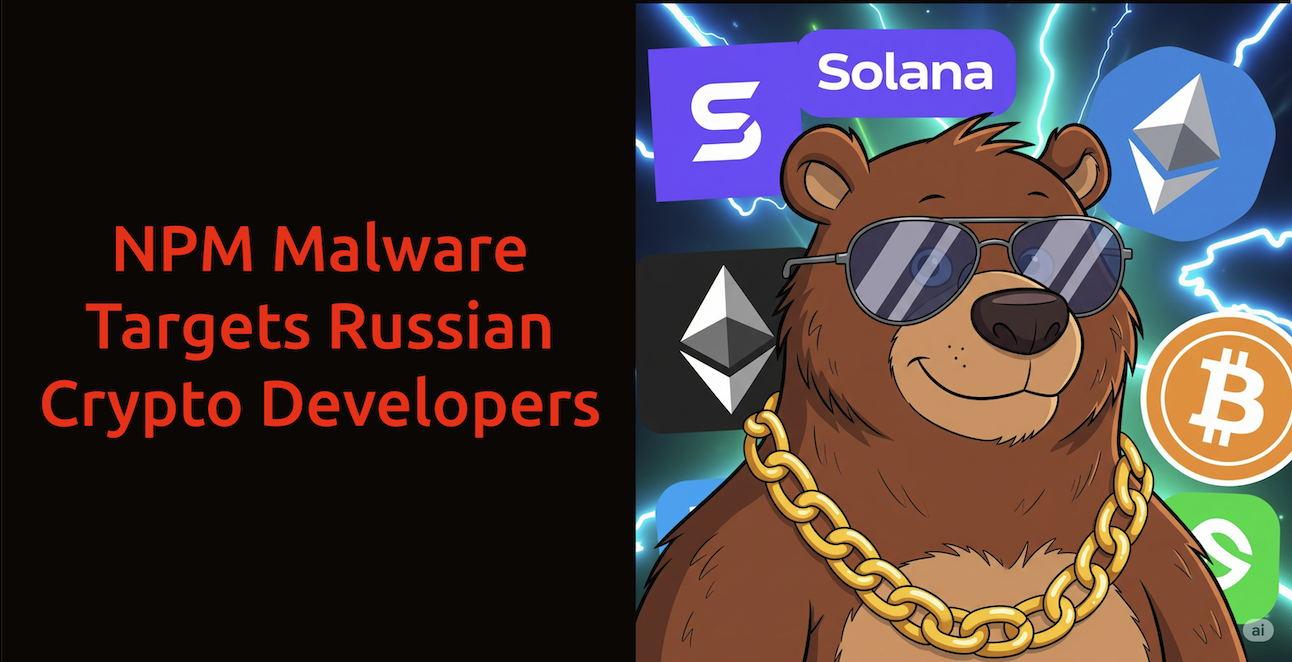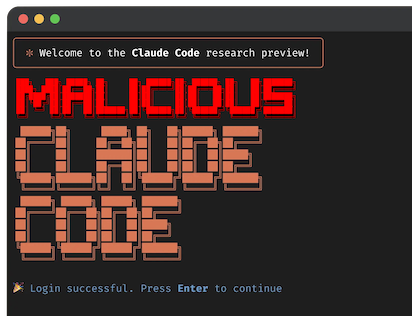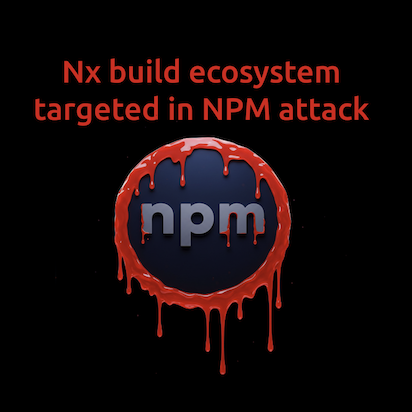tl;dr
A new threat campaign “Solana-Scan” includes multiple malicious NPM packages targeting the Solana cryptocurrency ecosystem. These packages include a new infostealer malware that appears to target Russian cryptocurrency developers
The background
The Safety research team, empowered by the Safety malicious package detection technology, identified a threat actor publishing multiple malicious packages today. These malicious packages targeted the Solana cryptocurrency ecosystem and pretende to "scan" for Solana SDK components. We have named this campaign "Solana-Scan".
Threat actor details
The threat actor, who used the email "crypto2001813@gmail[.]com" and goes by the handle “cryptohan” on NPM has two packages currently published on the NPM registry: “solana-pump-test” and “solana-spl-sdk”:
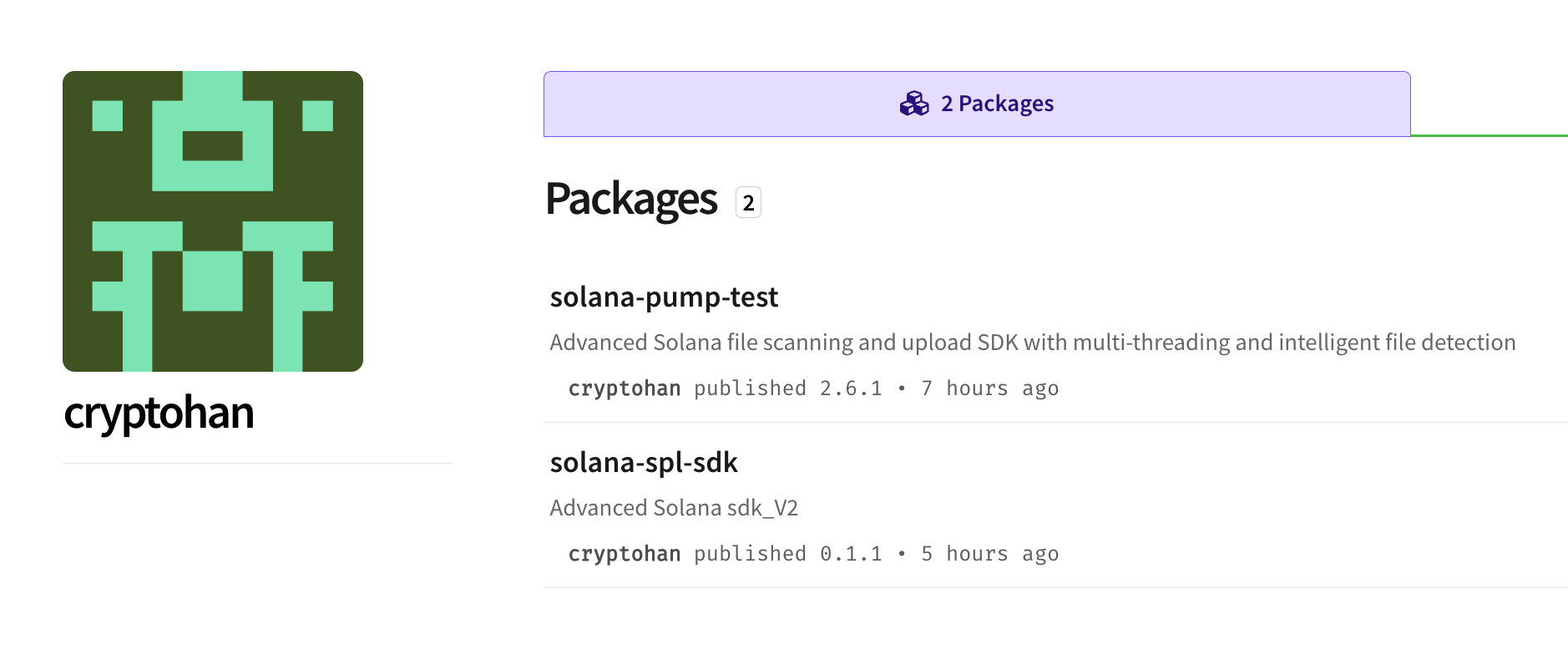
The name “cryptohan” is used throughout the cryptocurrency ecosystem by multiple people and multiple companies. We suspect the use of this name is just to provide the illusion of legitimacy rather than pretending to be a specific person or personality.
UPDATE: Thursday August 21, 2025
NPM removed the original two packages solana-spl-sdk and solana-pump-test right after we disclosed the two packages to NPM. However, NPM didn't remove the NPM user "cryptohan" so they authored a new package, solana-fb on August 20, 2025.

What do these malicious package do?
The first package published to NPM was the "solana-pump-test" package at 07.37 UTC.
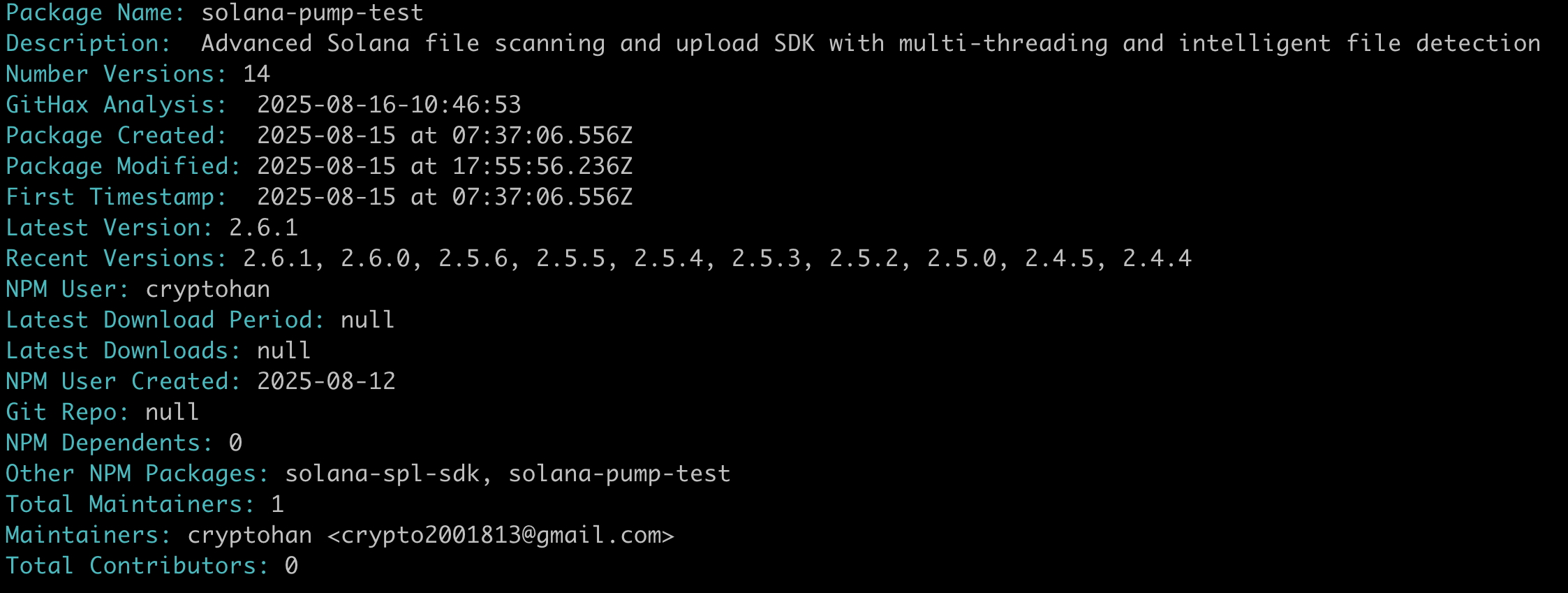
The second package "solana-spl-sdk" was published at 19.34 UTC:
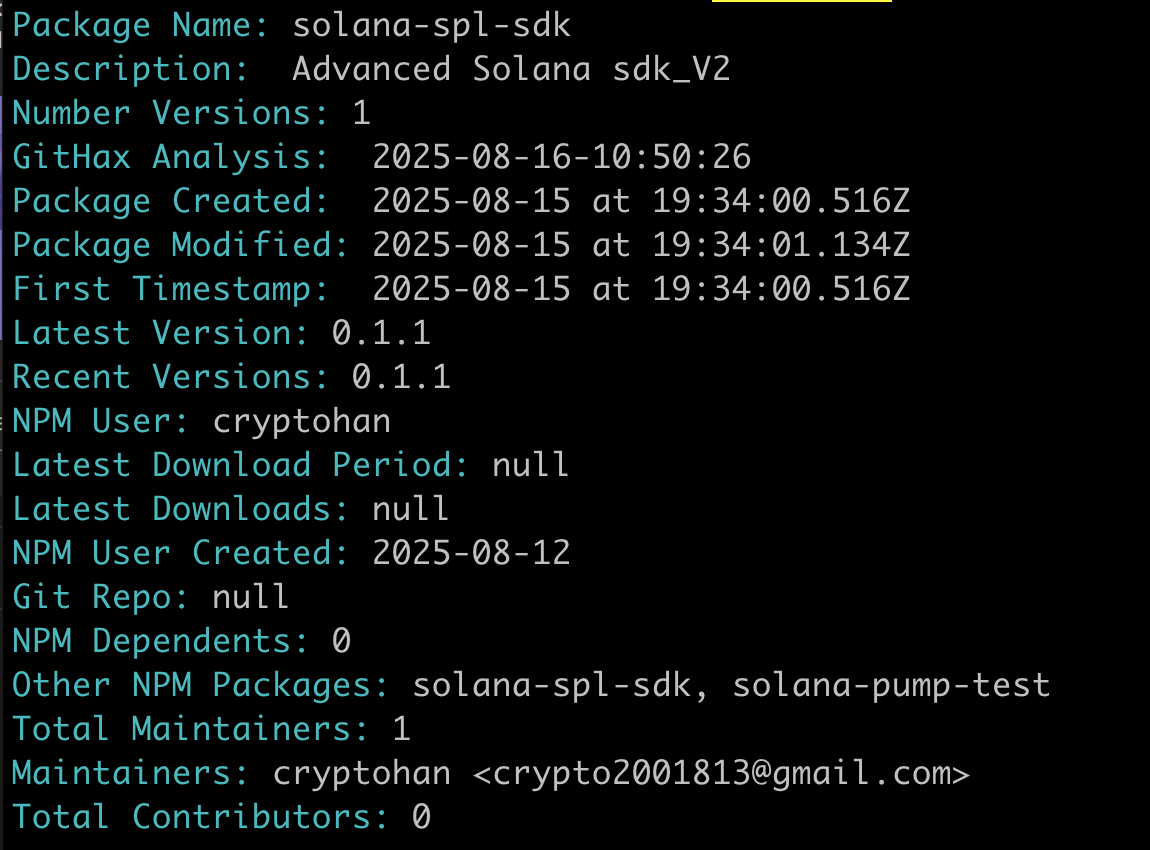
The Safety team also identified a third package, "solana-pump-sdk" that this threat actor recently removed from the NPM registry:

The package contents
If we inspect the package contents for both of these packages you’ll see they are effectively the same:
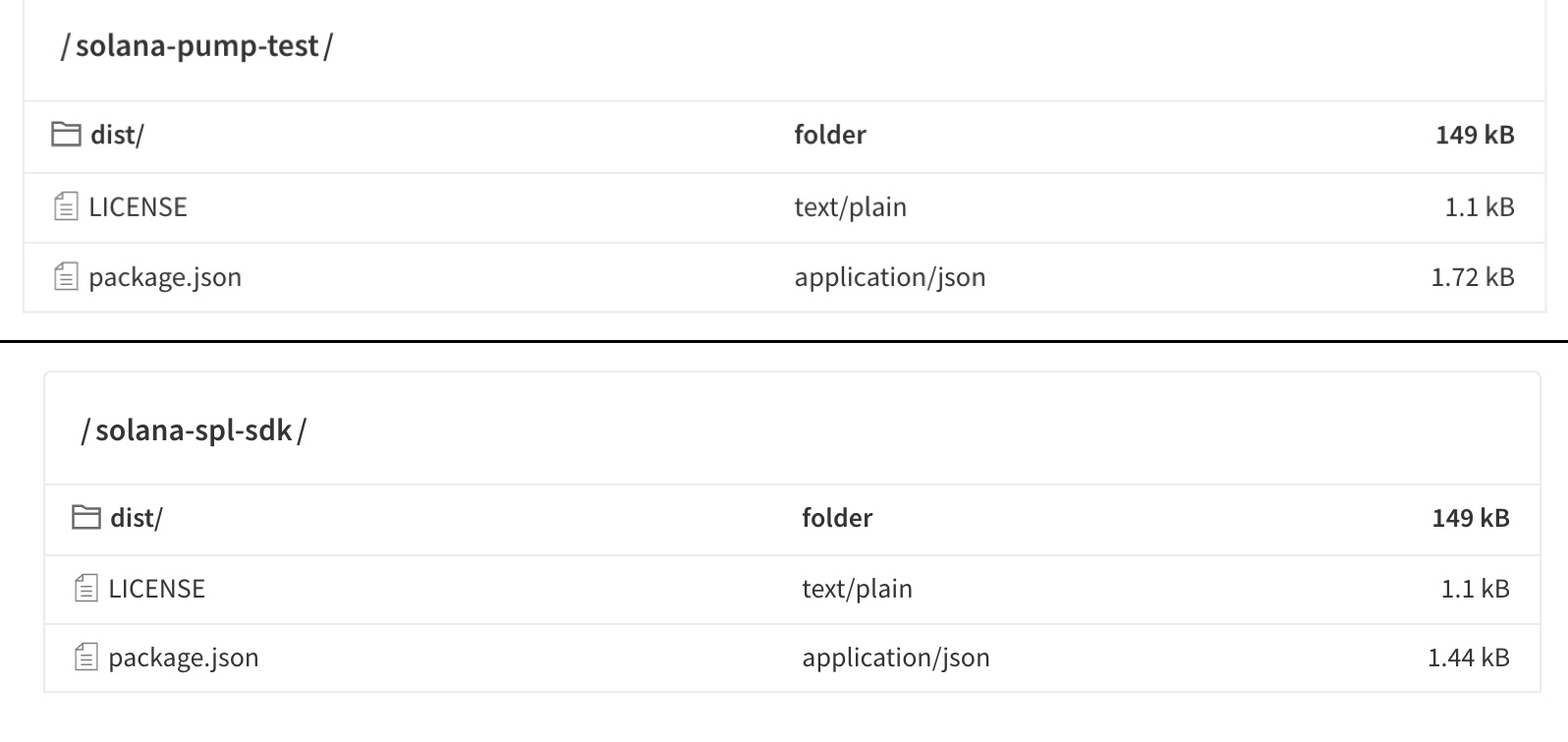
In the dist directory the files are exactly the same:
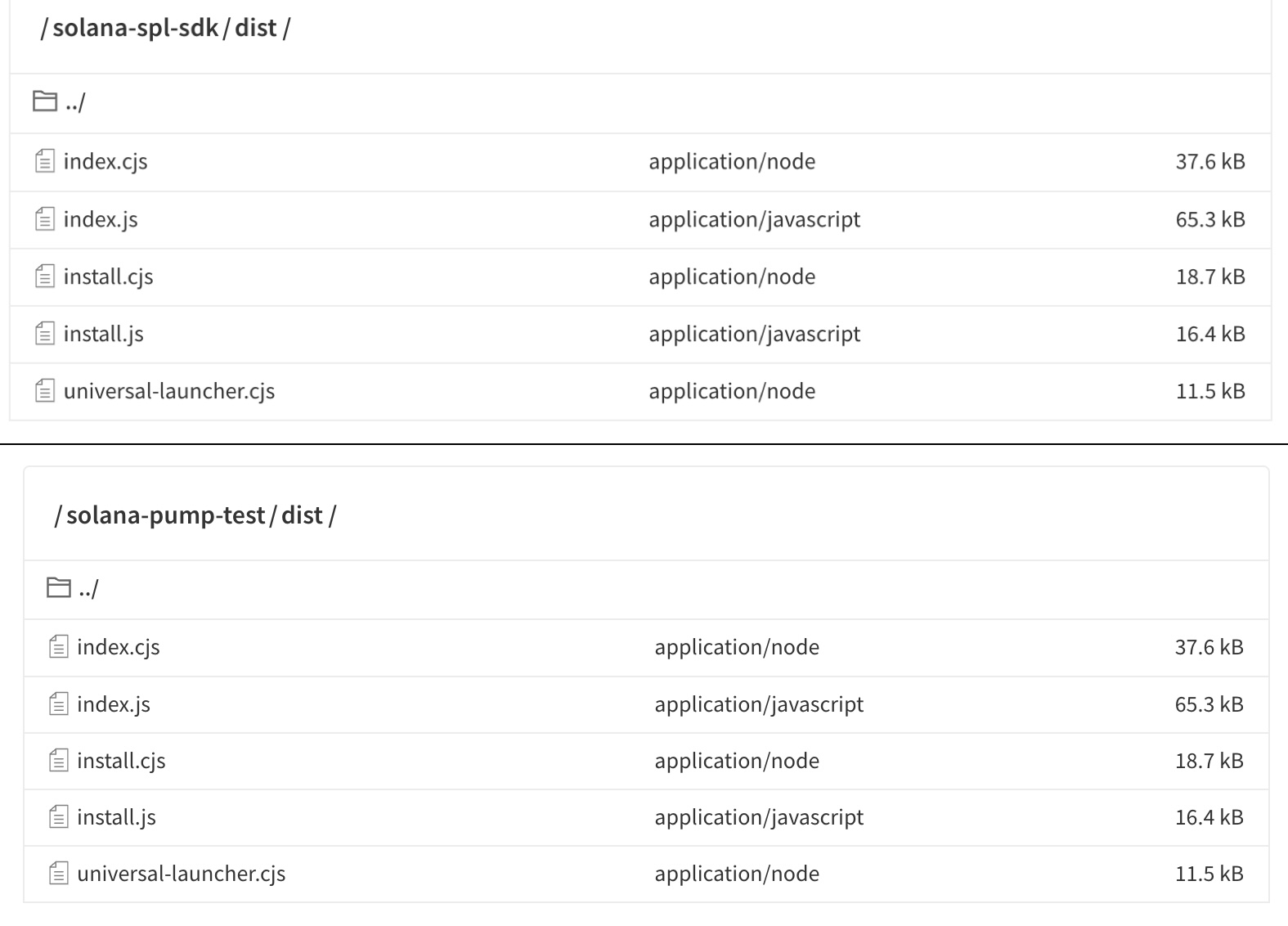
Let’s take a look at the package manifest file from one of the packages to see if it gives us any hints about how this package works. Here’s the package.json file for the solana-pump-test package:
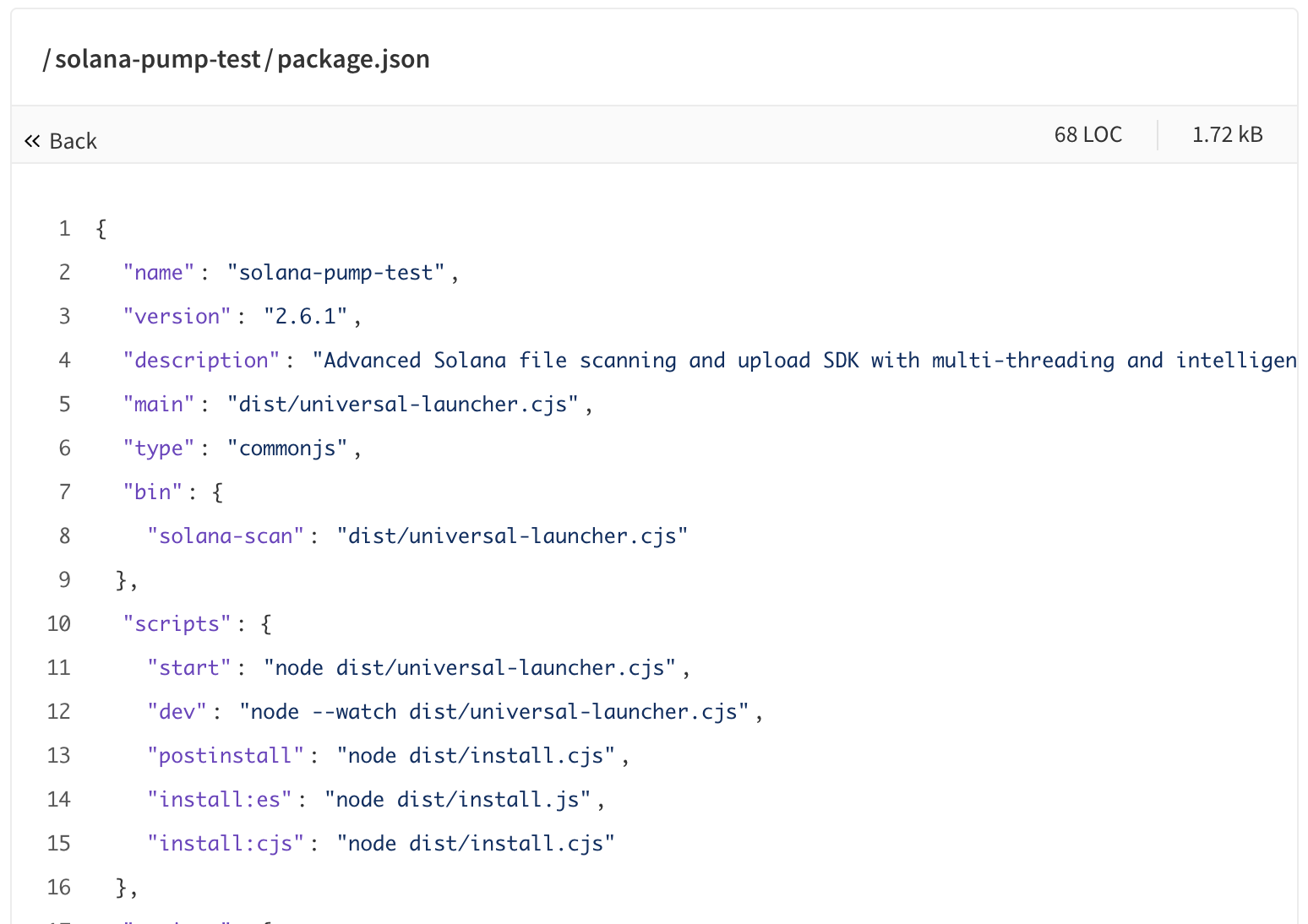
And here’s the package.json file for the solana-spl-sdk package:
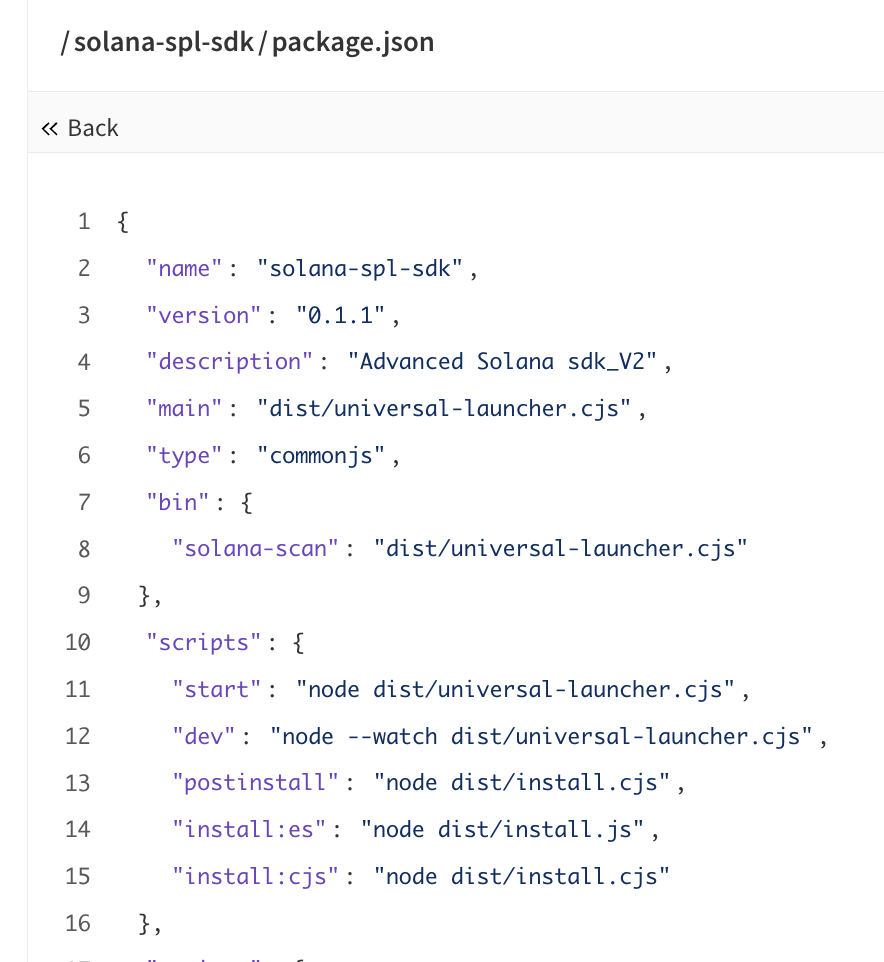
"Solana-Scan"
Notice that both package.json files have a “bin”: key that calls the dist/universal-launcher.cjs file.
This “solana-scan” name doesn’t appear to be an existing or historical NPM package. It appears as though the threat actors are trying to make this package look like a legitimate "scanner" for the Solana SDK components. Why you need a "scanner" for that, we don't know.
Regardless, since this “solana-scan” name is referenced in both files, we are going to call this threat campaign “solana-scan”.
Let's analyze the source
If we continue to analyze the package.json files we can see that they both call the dist/universal-launcher.cjs file from the “main”: entrypoint. This seems like a good place to start!

This file is heavily obfuscated. In fact, all five of the javascript files in the dist folder are obfuscated:

This is a strong signal that we should drill in! Let’s start by deobfuscating the universal-launcher.js Javascript:
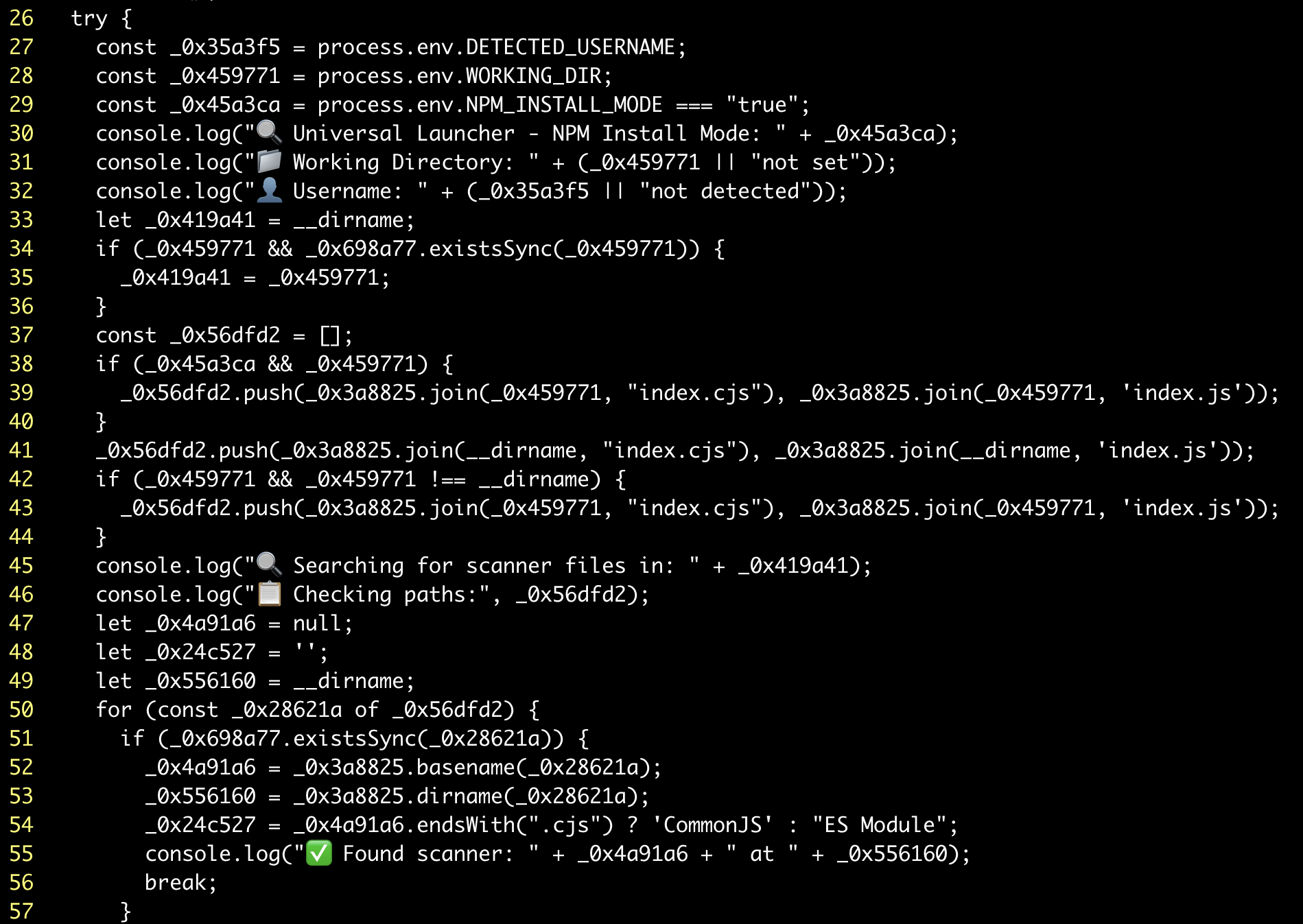
First stage - universal-launcher.js
First thing we notice is that the universal-launcher.js script is pulling data from the local environment including username, working directory and the way that package was installed. Later on this script extracts more data about the local node and NPM environments. This is a reoccuring theme we’ve identified where mature threat actors are now interacting with NPM and node on compromised machines in a more nuanced way.
Also, you will notice the console.log messages with emojis. This is a common sign that the code was written with a code generation AI tool like Anthropic’s Claude.
The first stage Javscript payload then searches for either index.js or index.cjs and when it finds one of those files found, it launches that second Javascript as a background process to maintain persistence. This second stage is the main payload.
Main payload - index.js
The second part of the payload is the index.js file:

This Javascript scans the compromised system for files including the user's home directory, Documents, Downloads, Desktop, etc, and additional drives on Windows.
It specifically looks for files with the following extensions: .env, .json, .one, .one1, .one2, .txt and then uses a set of regular expressions to identify potential cryptocurrency tokens in the
Interesting, it also has a list of directories to exclude, such as node_modules, .git, etc.
Command and Control (C2)
When its done collecting the data its after it wraps it all in a JSON blob and exfiltrates it to the IP address 209.159.159.198 port 3000.
If we search Shodan for that IP address we see that it appears to be hosted in the US:
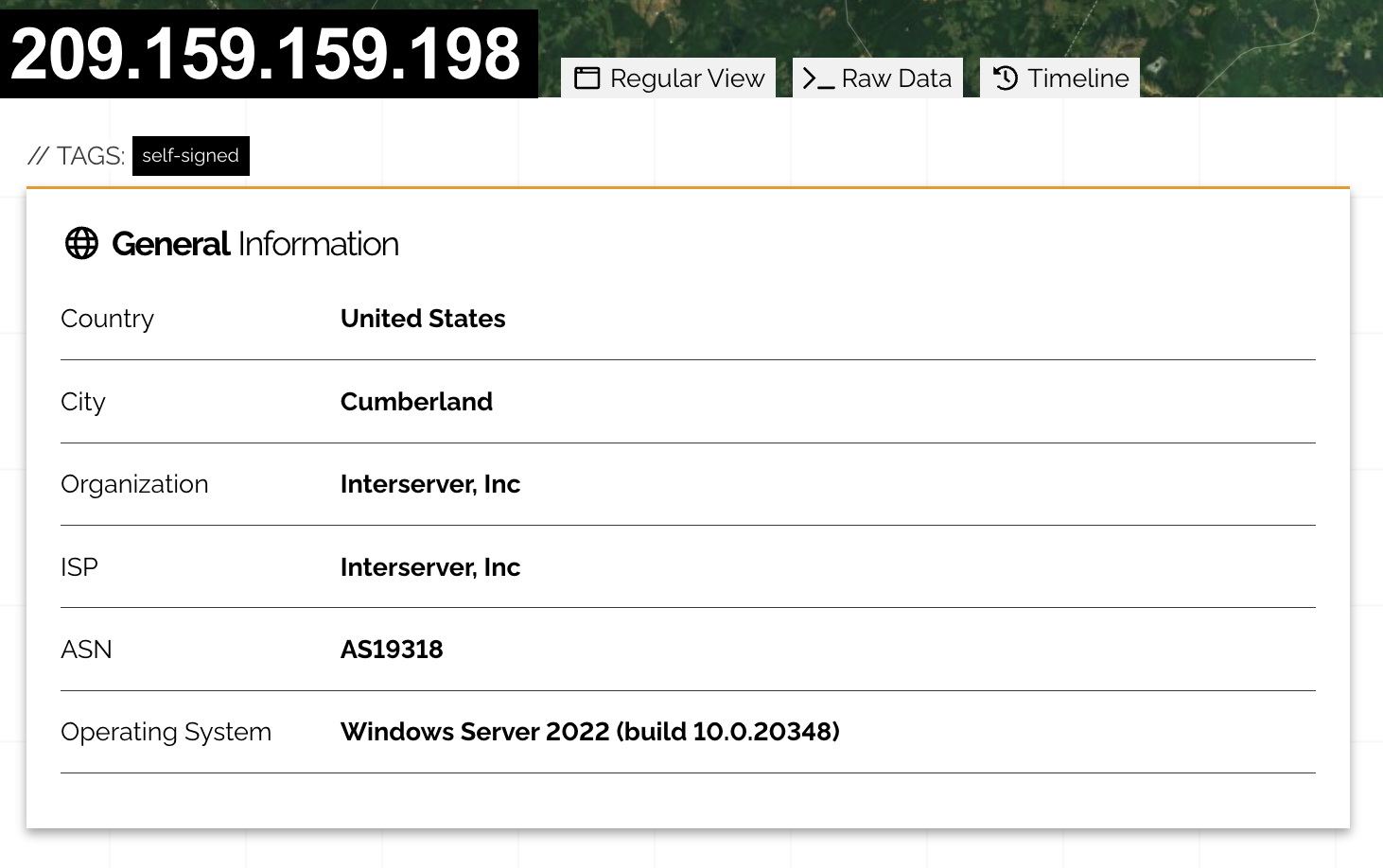
There is an active RDP service running on a Windows Server 2022 instance on that IP address:
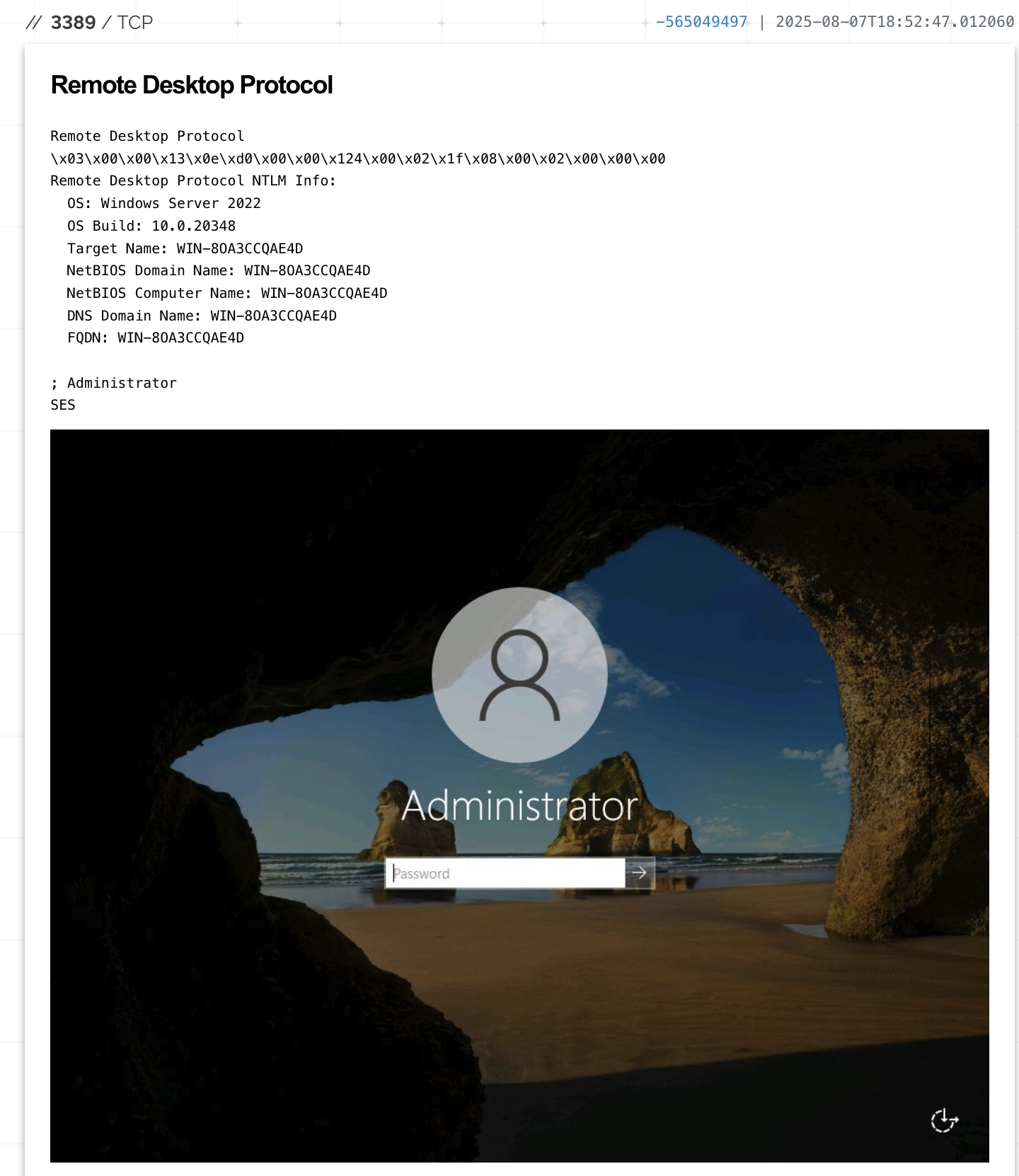
Web C2 details
If we browse to http://209[.]159[.]159[.]198:3000 we see a web service.
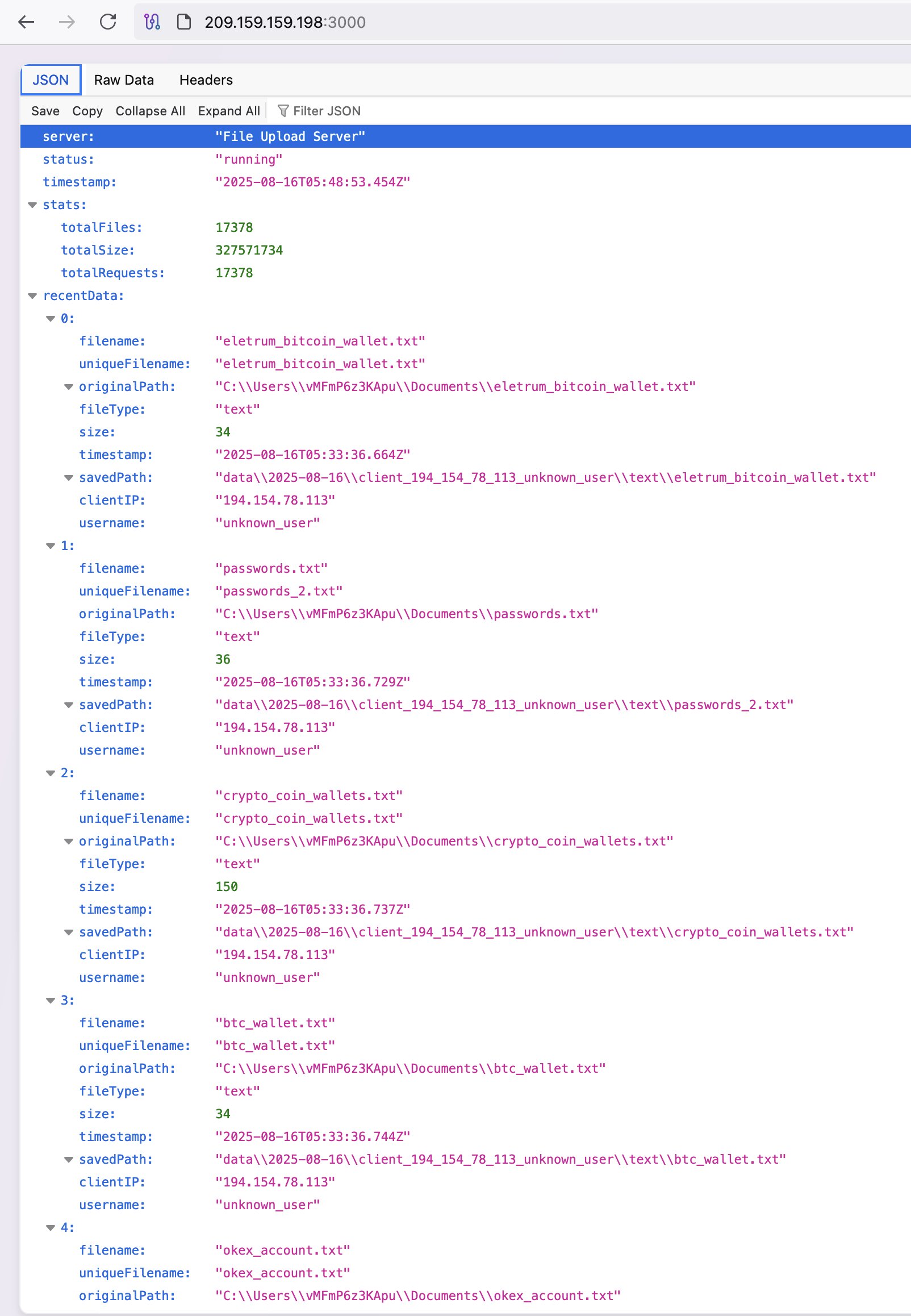
Unfortunately, you can see files and details about compromised hosts via the website hosted at the IP address. These files include password files, crypto exchange credentials, and crypto token wallet files amongs others.
It's unusual to get visibility into the C2 infrastructure behind threat campaigns like this one. The Safety team continues to monitor the website.
Victims appear to be Russian
If you look at the data exposed in the web c2 server you'll see IPs that are in Moscow, Russia. We have not been able to verify that these IPs belong to people that were compromised by the Solana-Scan attack, or that NPM packages were the vector of compromise.
What's unique about this attack
There are several things about this attack that stand out:
- The C2 appears to be in the US and the victims appear to be in Russia. Is this a state sponsored actor?
- The Javascript payload has signs that it was written with generative AI tools like Claude
- These packages share a trend of interacting with node and NPM to better deliver the malicious payload
The timeline:
The first package was published at 7.37 UTC on August, 15, 2025. In total 14 versions were published over 10 hours:
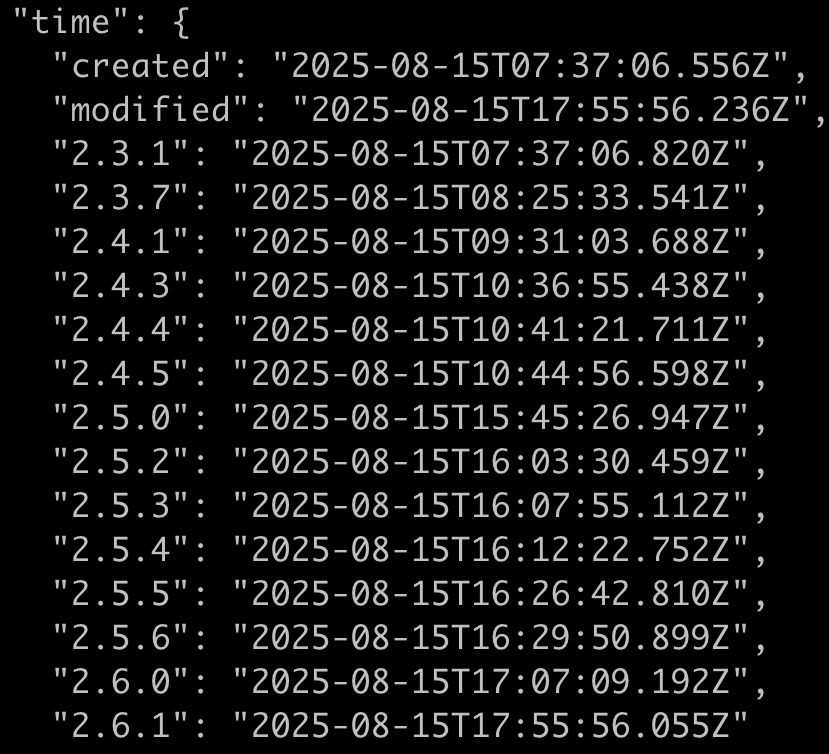
Indicators of Compromise (IOCs)
Based on my research this threat campaign has several IOCs you can look for:
NPM Packages:
solana-fb
solana-pump-test
solana-spl-sdk
solana-pump-sdk
Files
bd93bea65242bc8205728f129c9bbadc694d849a028fc2d771f9ea60a293665c ./index.cjs
e6f75dbf6d42e4c34b1a267426accd6dfd3ea7773a28e580c10687768fcc3883 ./index.js
ed5b9c8bfede0668a240e976e65a46e2dd393ef597c7068c1bb842173ae51ebb ./install.cjs
233a408bbcd072236d9331792356ed0b59da5a4c51e3ca74f860a4bf1a621c15 ./install.js
21a6135067c3f150a4629e4746c8b81c5b41567117eeaf69224a1919077521d9 ./universal-launcher.cjs
Email addresses:
crypto2001813@gmail[.]com
IP Addresses:
209[.]159[.]159[.]198
How can you protect your org from this kind of attack?
Existing security tools like SCA and EDR do not protect you from threats like the Solana-Scan attack. Fortunately, there are ways to protect both your developers and CI/CD pipelines form attacks like this one.
The world's first AI-powered Software Supply Chain Firewall analyzes every package request in real-time, automatically blocking malicious and vulnerable dependencies before installation. Stop supply chain attacks at their source while maintaining development velocity.
Read more about our exciting Firewall product!
How can Safety help protect you from these attacks?
Traditional vulnerability scanning happens too late - after potentially malicious code is already in your system. Which means that ASPM and EDR solutions don't protect you from this type of threat.
But all is not lost, as the Safety Firewall protects develoeprs and CI pipelines proactively. Every package installation request is analyzed before reaching public repositories. Malicious, vulnerable, and policy-violating packages are automatically blocked before they can enter your systems, preventing rather than just detecting threats.Every package installation request is analyzed before reaching public repositories. Malicious, vulnerable, and policy-violating packages are automatically blocked before they can enter your systems, preventing rather than just detecting threats.Every package installation request is analyzed before reaching public repositories. Malicious, vulnerable, and policy-violating packages are automatically blocked before they can enter your systems, preventing rather than just detecting threats.
You can sign up for a free Safety account and try the Safety Firewall HERE. Feel free to reach out to me with any questions!
Let us know if this blog post helped you
I hope this blog post has helped you. Feel free to hit me up directly if you have any questions about this campaign.

Paul McCarty - Head of Research, Safety
You can find me on LinkedIn and BlueSky.


